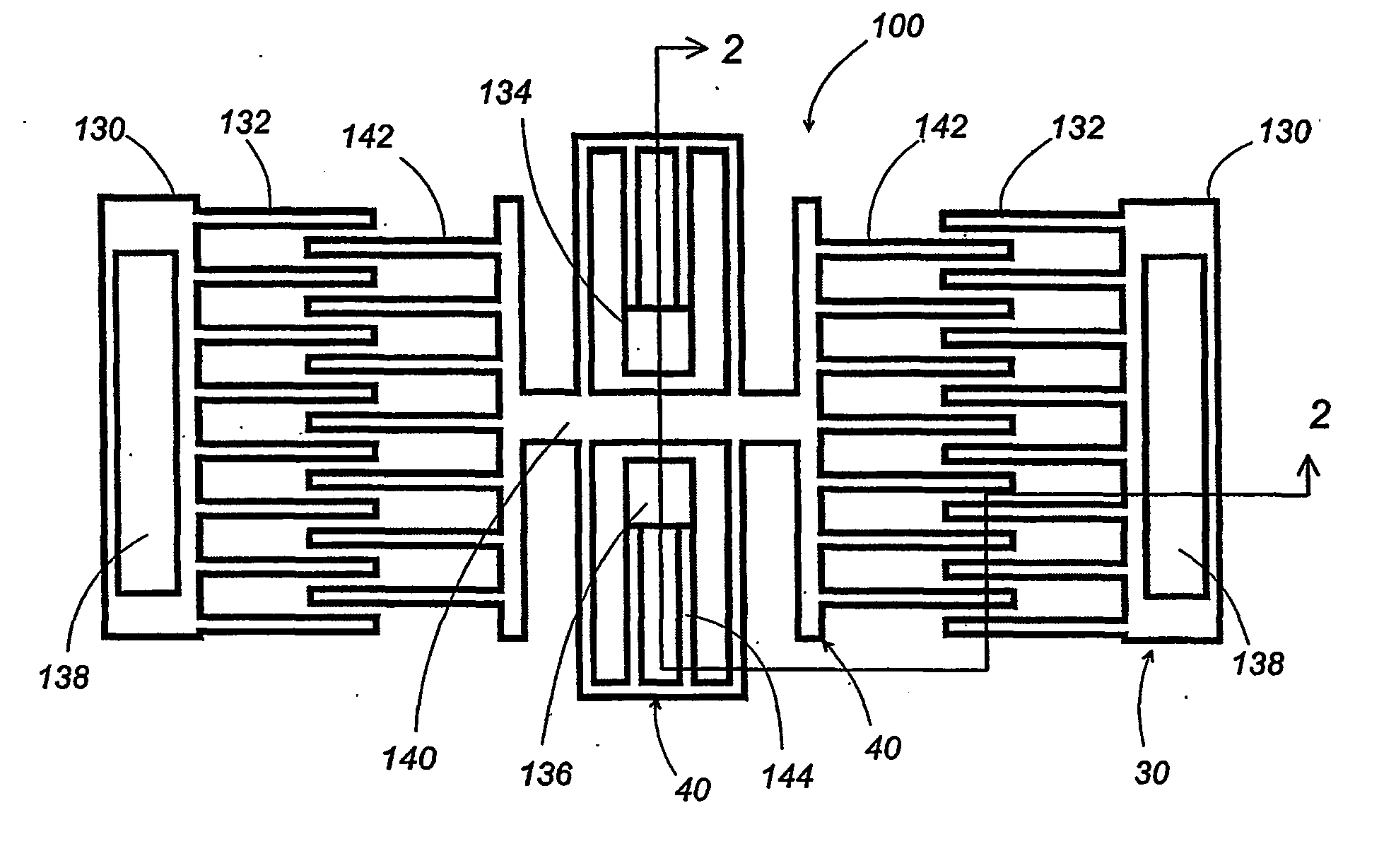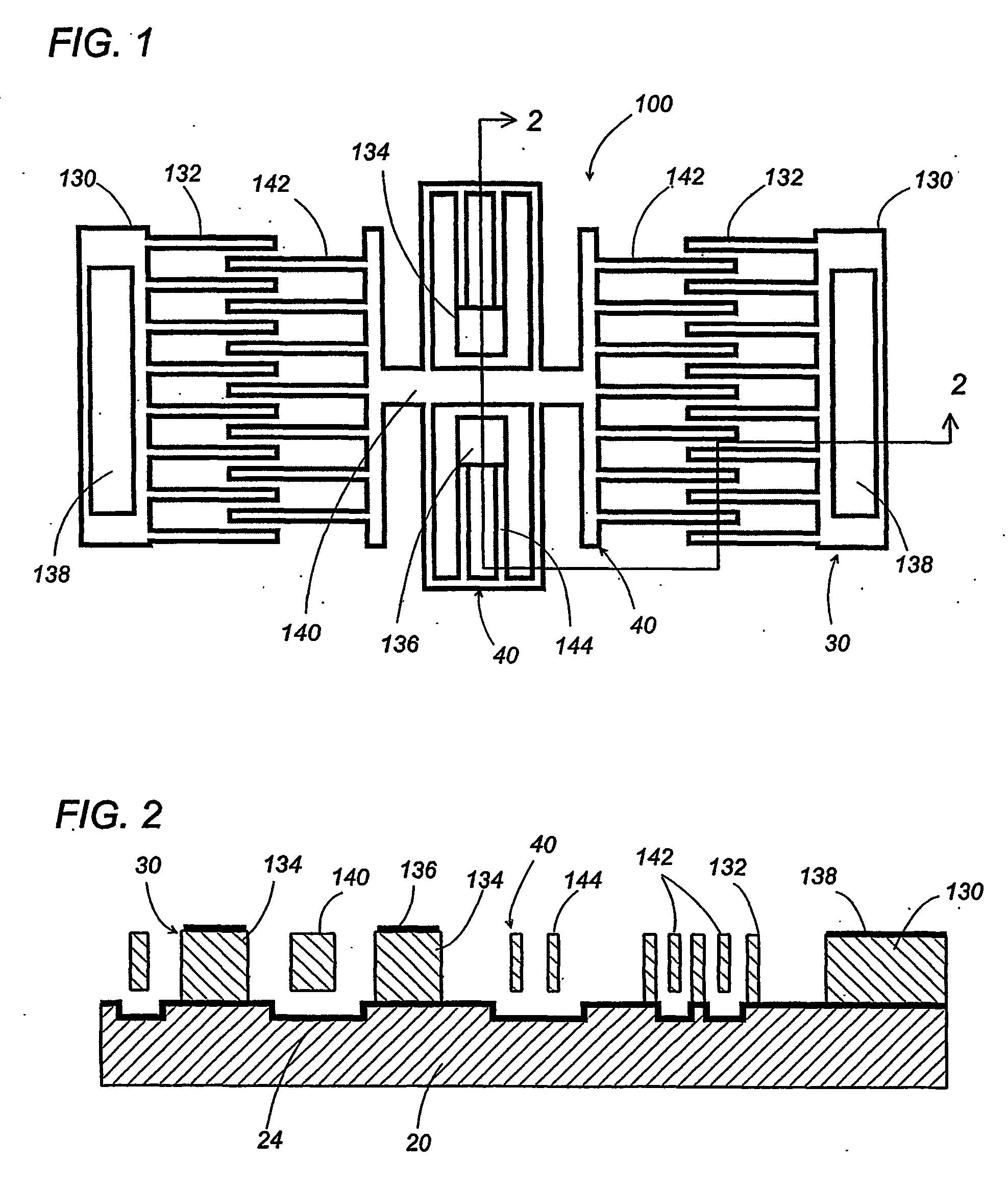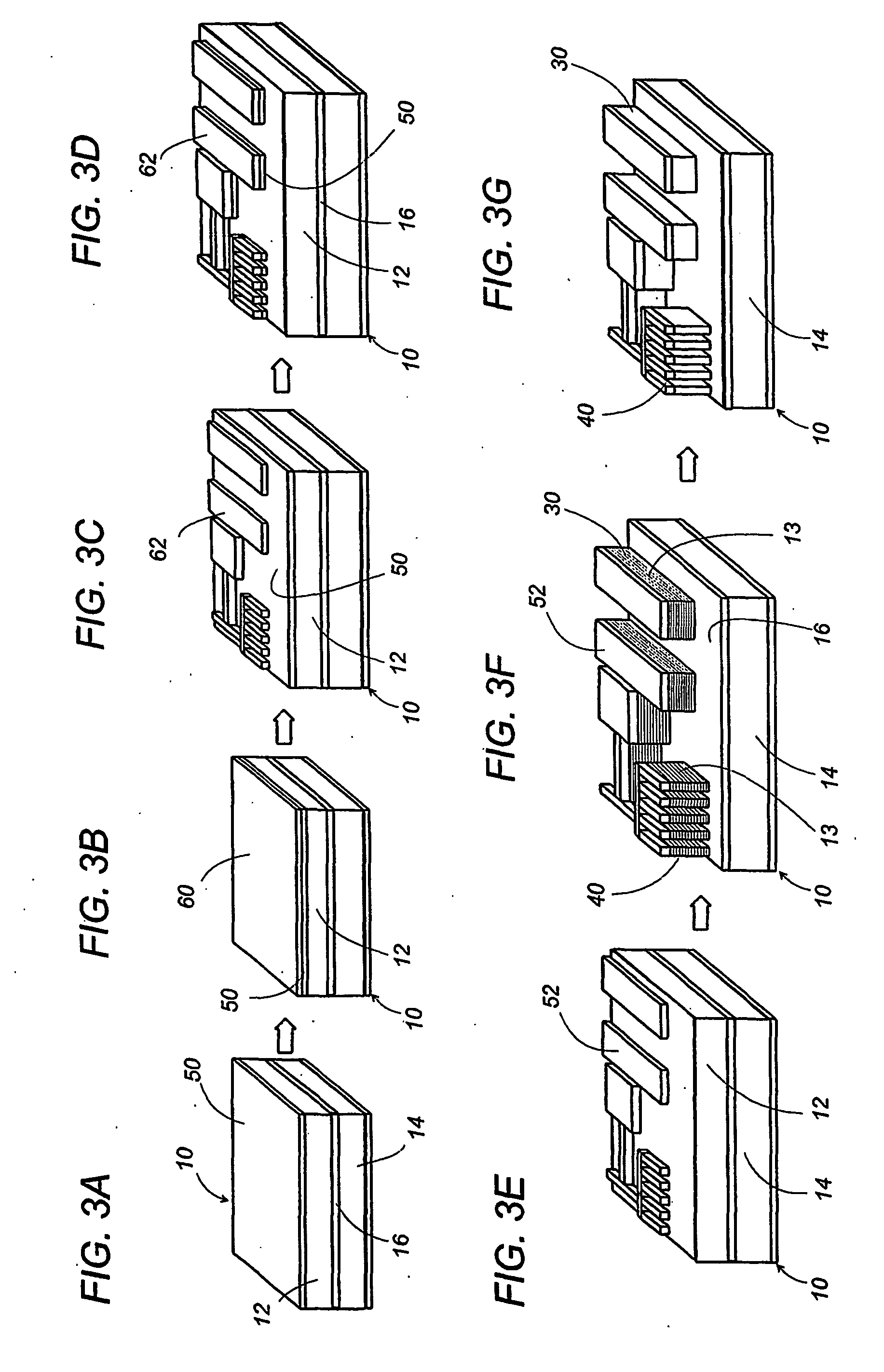Process for fabricating a micro-electro-mechanical system with movable components
- Summary
- Abstract
- Description
- Claims
- Application Information
AI Technical Summary
Benefits of technology
Problems solved by technology
Method used
Image
Examples
second embodiment
[0039]FIGS. 10 and 11 illustrate a process for fabricating the like a micro-electro-mechanical system (MEMS) in accordance with the second preferred embodiment which is similar to the above embodiment except for the use of the upper semiconductor substrate 10A made of a bare silicon monocrystal. The upper substrate 10A is firstly coated on its top with an oxide layer 50A formed by the thermal oxidation or the CVD process, and is masked With a resist pattern 62A, as shown in FIG. 10A. Then, the oxide layer 50 is etched to leave a mask 52A on top of the upper substrate 10A (FIG. 10B), after which the resist pattern 62A is removed off (FIG. 10C). Then, the upper substrate 10A is treated with the deep reactive ion etching (DRIE) to form the fixed components 30A and the movable components 40A commonly projecting on the bottom layer 14A of the upper substrate 10A, as shown in FIG. 10D. Next, the exposed faces of the components 30A and 40A are thermally oxidized in order to eliminate serra...
third embodiment
[0041]FIG. 12 illustrates a process for fabricating the like a micro-electro-mechanical system (MEMS) in accordance with the third preferred embodiment which is similar to the above embodiment except that it is contemplated to make the movable components 40A shorter in its height than the fixed components 30A. The movable components 40A may be required to be given a height shorter than the fixed components 30A for reason of leaving a large gap on the lower substrate 20A and / or adjusting the mechanical characteristics. In order to differentiate the height of the fixed and movable components, the present embodiment utilizes a composite mask composed of a first mask 52 and a second mask 54 which is etched at a higher rate than the first mask 52 but at a lower rate than the upper substrate 10A, i.e., silicon, when subjected to the same etching treatment. FIG. 12A shows the first mask 52 which is formed by selectively removing or etching away portions of the oxide layer formed on top of ...
fourth embodiment
[0042]FIG. 13 illustrates a useful scheme of etching away the bottom layer 14A of the upper substrate 10A in accordance with a fourth embodiment of the present invention. The present embodiment is particularly useful in case where the components are designed to be spaced laterally by largely varying widths, and where the upper substrate 10A is devoid of the buried oxide layer. In such case, cavities 15 of greatly different widths are to be left between the adjacent ones of the posts or the components 30A and 40A after the top layer 12A of the upper substrate 10A is etched away. It is true that, during the etching of the top layer, the growing cavities of greater widths are likely to be etched to a greater depth, which causes the finished cavities to have different depths, failing to align the bottoms of the cavities in the same level. Irrespective of the misaligned bottoms of the cavities, the present embodiment gives an easy etching control for releasing the components 30A and 40A ...
PUM
| Property | Measurement | Unit |
|---|---|---|
| Current | aaaaa | aaaaa |
| Dielectric polarization enthalpy | aaaaa | aaaaa |
| Height | aaaaa | aaaaa |
Abstract
Description
Claims
Application Information
 Login to View More
Login to View More - R&D
- Intellectual Property
- Life Sciences
- Materials
- Tech Scout
- Unparalleled Data Quality
- Higher Quality Content
- 60% Fewer Hallucinations
Browse by: Latest US Patents, China's latest patents, Technical Efficacy Thesaurus, Application Domain, Technology Topic, Popular Technical Reports.
© 2025 PatSnap. All rights reserved.Legal|Privacy policy|Modern Slavery Act Transparency Statement|Sitemap|About US| Contact US: help@patsnap.com



